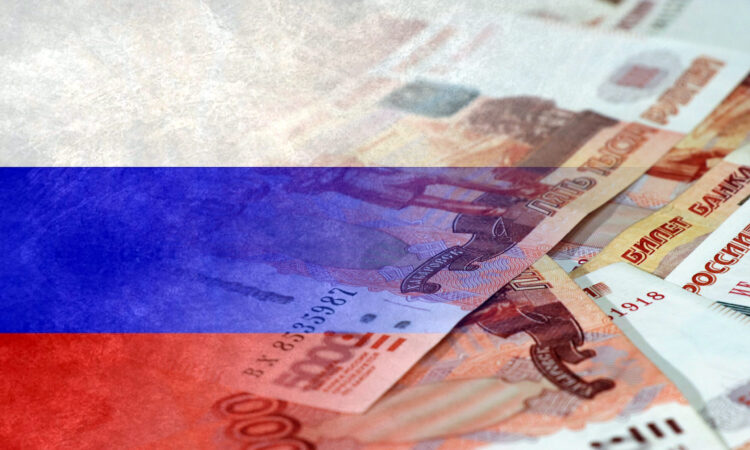
The U.S. and its European allies are exploring ways to use tens of billions of dollars in frozen Russian assets to fund Ukraine’s war efforts, as political deadlock in Washington and Brussels threatens the flow of Western financial and military aid to Ukraine.
An estimated $300 billion in Russian assets are currently frozen in Europe and the U.S., as a result of Western sanctions imposed on Russia in the immediate aftermath of its February 2022 invasion of Ukraine. Until recently the U.S. and the European Union had balked at seizing those funds, citing legal and financial concerns.
Now that may be about to change.
The Biden administration is considering seeking Congressional authorization to seize the funds, according to the New York Times. Separately, the Financial Times reported that the issue could be discussed at a February meeting of the leaders of the G-7 group of western economic powers.
From Ukraine’s point of view, the money can’t come soon enough. “We need it urgently”—that was the warning from Yulia Svyrydenko, Ukraine’s deputy prime minister, as 2023 came to a close.
Without the aid packages on the table—about $60 billion from the U.S. and close to $55 billion, spread over four years, from the European Union—Ukraine would lose key military support and may also struggle to pay for basic services. Salaries for public officials and pension payments for millions of Ukrainians could be delayed, Svyrydenko said.
Why not seize the $300 billion?
It may seem like an obvious move–drain Russian resources and boost the Ukrainian resistance in one step. The $300 billion would more than cover Ukraine’s immediate needs, and many policymakers have argued for seizing those funds since the early days of the war.
The risk for Western policymakers is the message it would send to other international investors who park cash in the West. If they fear that their funds could be seized if their countries fall on the wrong side of the West, they might move their deposits elsewhere—to China, for example.
“There’s obviously a concern that that business will go elsewhere,” Jacob Kirkegaard, a senior fellow with the German Marshall Fund in Brussels, explained to the Messenger. “There’s no particular reason why it has to be in Belgium or say, Luxembourg. It could be outside of the EU. So there’s a mercantilist issue here.”
There are also legal questions.
The $300 billion belongs to the Russian state—and can be reclaimed if and when sanctions are lifted. And while the Russians don’t have access to all that money right now, technically no one else does either.
U.S. Treasury Secretary Janet Yellen highlighted the conundrum last year.
“While we’re beginning to look at this,” Yellen said, “it would not be legal now in the United States for the government to seize those assets.”
Europe came to the same conclusion; a group of EU officials said over the summer that they could see “no credible legal avenue allowing for the confiscation of frozen or immobilized assets.”
The U.S. can legally seize assets used in criminal activities—and in one case the U.S. took control of $5.4 million in frozen assets belonging to Kremlin-linked oligarch Konstantin Malofeev, who had been found guilty of sanctions violations. But that’s a tiny fraction of the billions in frozen Russian assets, and it’s harder to make the case that the Russian government has violated U.S. law.
Time for a change?
Now things could change—driven largely by the funding deadlock and a growing desperation in Ukraine.
“It would require a concerted push by the Biden administration combined with continued lack of funding by Congress to make this doable,” Kirkegaard said.
The closest precedent for seizing Russia’s foreign assets may be the George W. Bush administration’s seizure of $1.7 billion in Iraqi assets in 2003—money that was eventually used to pay for Iraq’s reconstruction. But in that case, the U.S. was in a state of active armed hostilities with Iraq. The Biden administration has insisted that the U.S. is not at war with Russia.
This week, the Nobel Prize-winning economist Joseph Stiglitz, in a Project Syndicate op-ed co-authored with economist Andrew Kosenko, argued in favor of seizing the Russian funds, and said Western fears about the fallout were misplaced.
“Seizing Russia’s frozen assets would not affect other countries’ assets or change the incentives of governments that are not planning a major war,” they wrote.
On the contrary, they said, “by not seizing these funds, Western countries are signaling that governments waging brutal wars of aggression can violate international law and simultaneously benefit from it to escape the consequences of their actions.”
The threat of retaliation
Beyond the legal and financial questions, there is one other concern about taking control of the Russian money and sending it to Ukraine: the threat of retaliation.
The Kremlin has already said that it would respond by seizing Russian assets held by Western companies and individuals. Precisely how much that might yield for the Kremlin is not clear, although Russia has claimed that it would seize foreign assets that are “comparable” to its assets in the West.
“It will undermine the confidence of other countries in the United States as well as in the EU as economic guarantors,” Dimtry Peskov, Russian President Vladimir Putin’s chief spokesman, told reporters in Moscow in December. “Therefore, such actions are fraught with very, very serious consequences.”
Western analysts doubt the Russian claims, noting that foreign companies have already been writing off the value of their Russian assets, which in many cases Russia has already moved to nationalize.
All of which suggests that the idea of Ukraine getting its hands on that Russian money–which seemed like a pipe dream a year ago–may now be a possibility.
“The money will either come from Western taxpayers or from Russian expropriated assets,” financial crime analyst John Cusack told The Messenger last year.
It’s a $300 billion question that the Ukrainians want answered soon.






